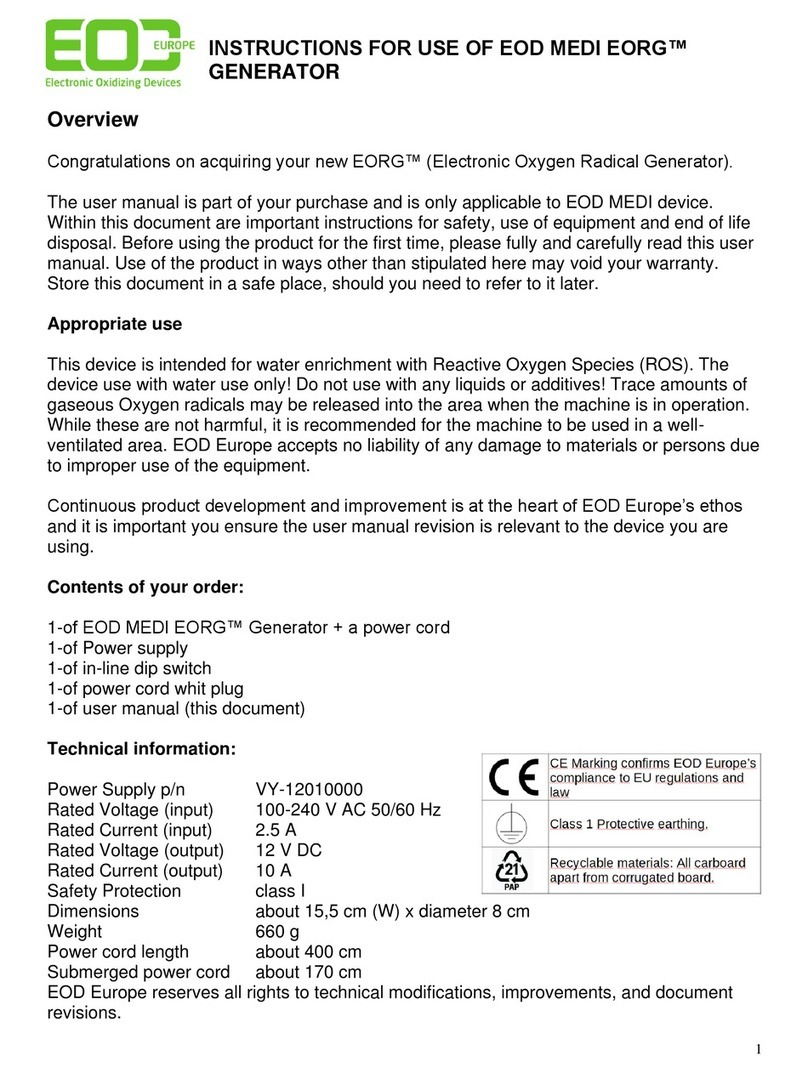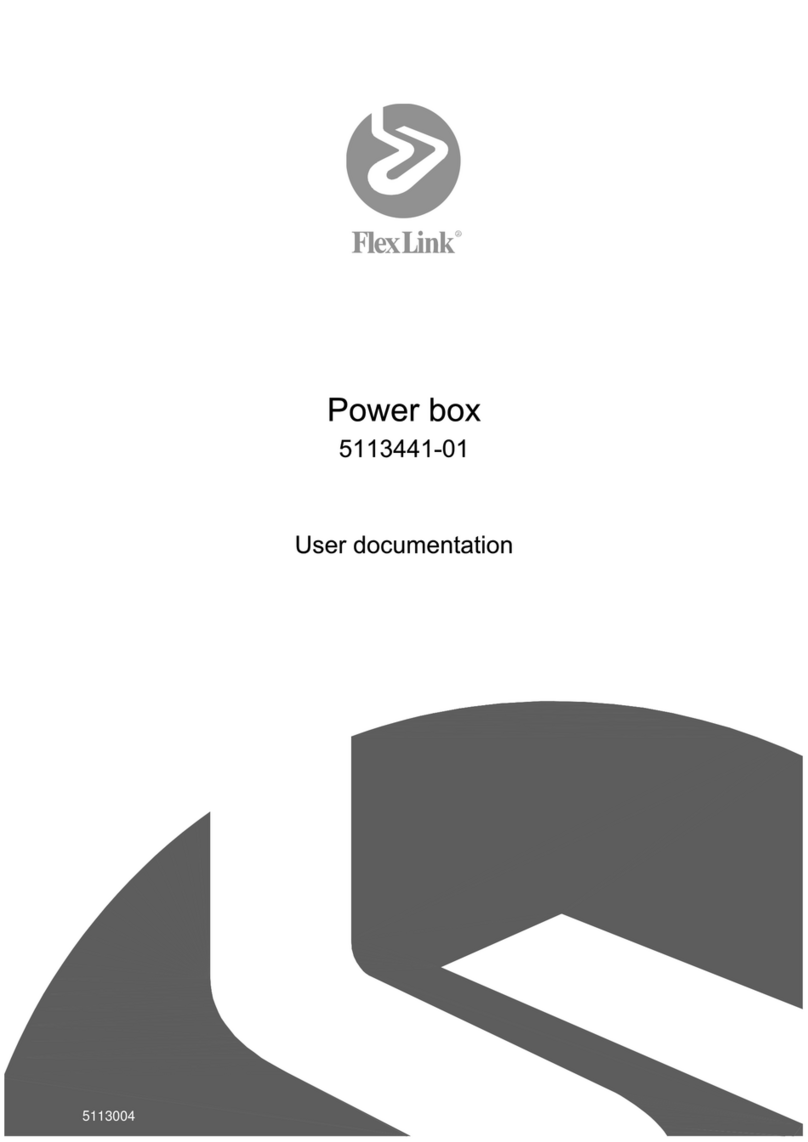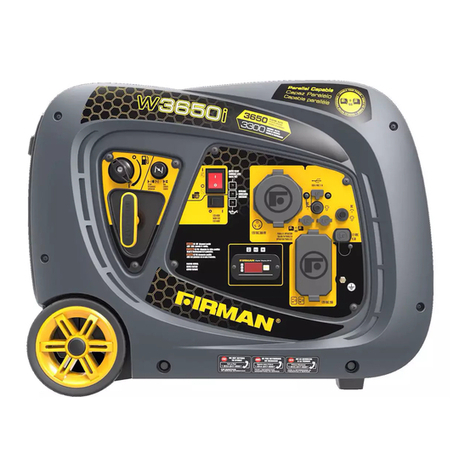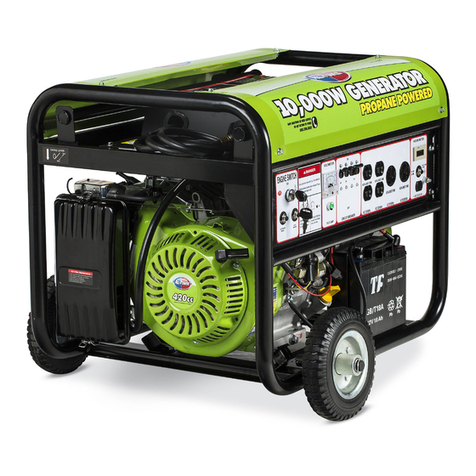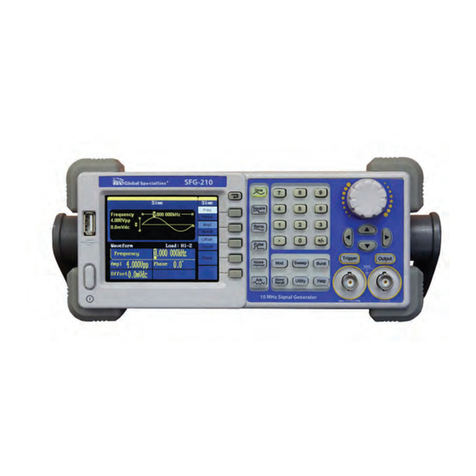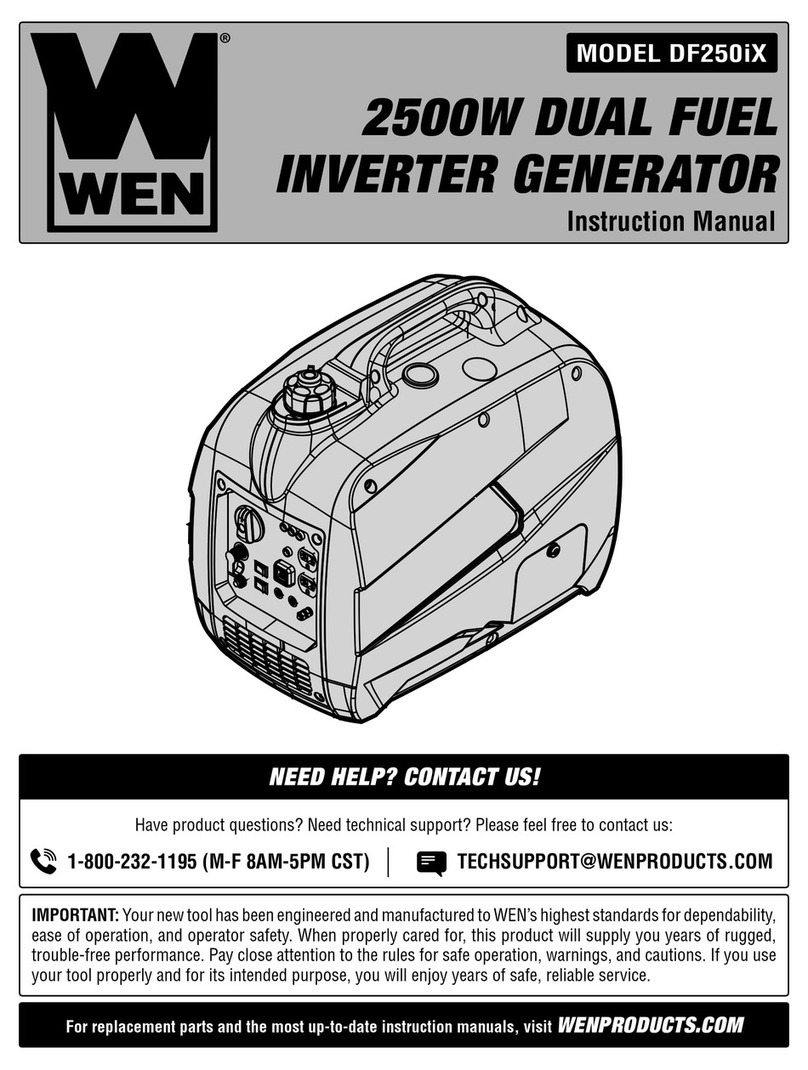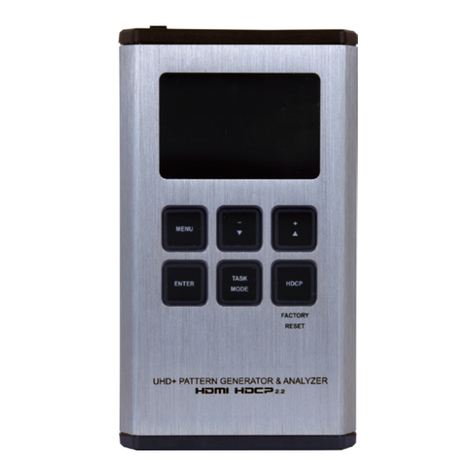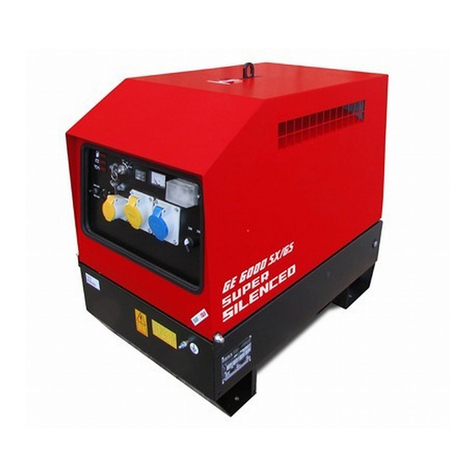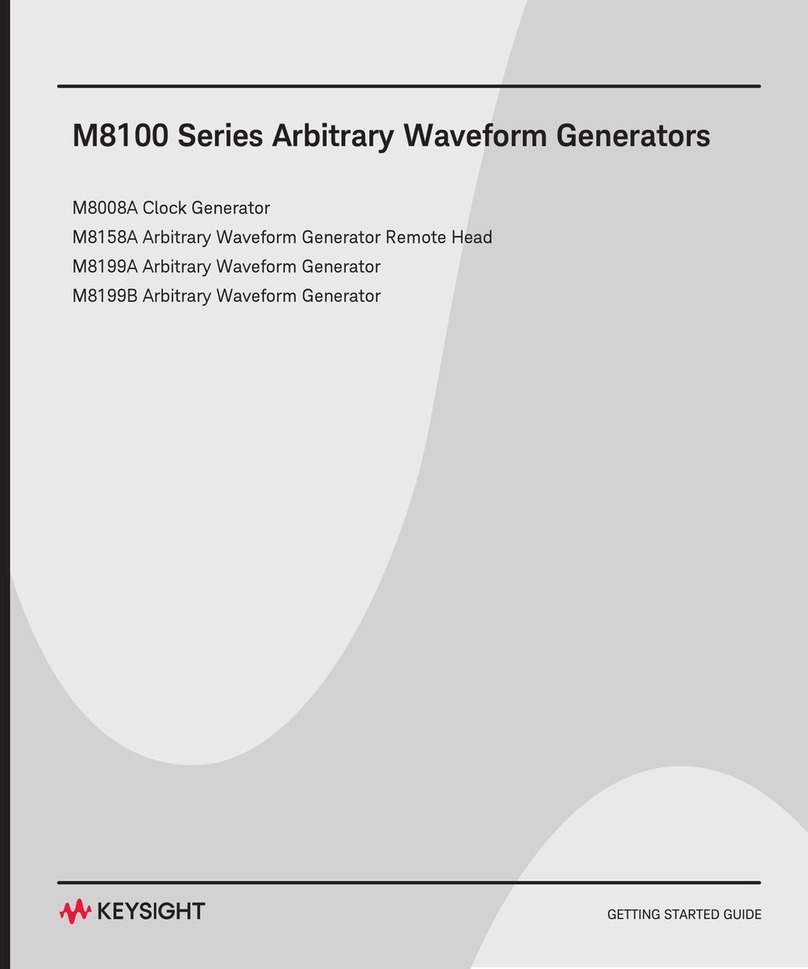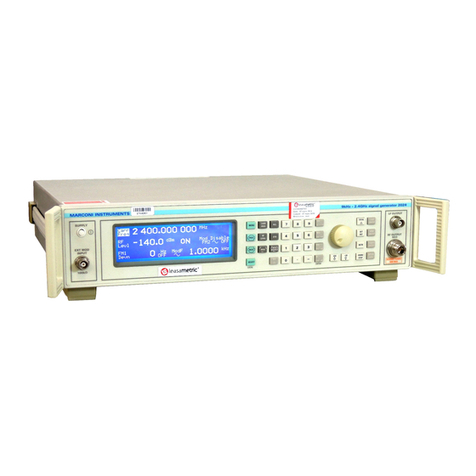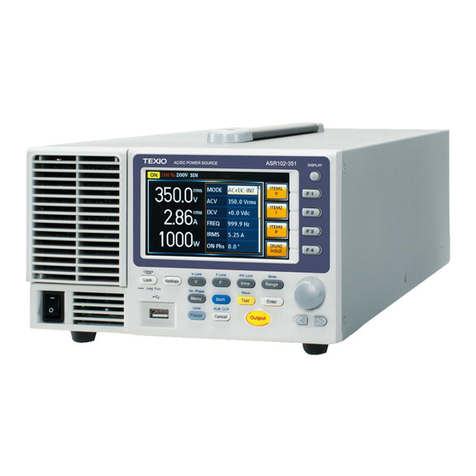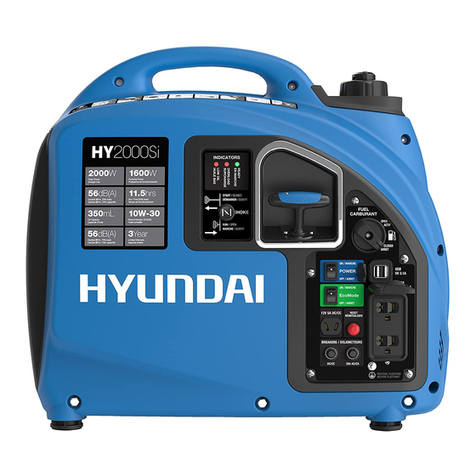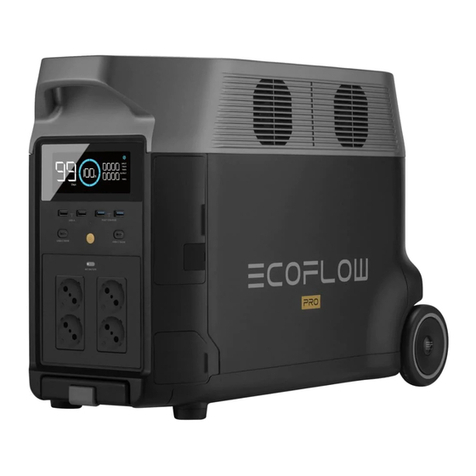Infinite TRANSTECTOR 700 AV/T Series User manual

Series 700 AV/T Power Conditioner
60 K(I) Power Conditioner with
Voltage Regulation (60 Hz)
Owners Manual
Designed for the Varian On Board Imager™
60 k(I) 60 Hz Single Output
Important safety instructions - save these instructions and review prior to using equipment
1402-001 Rev C

Quadruple Output Power Conditioner | Owners Manual 2
/v |
TABLE OF CONTENTS
Receiving and Inspecting the Unit 3-4
General Description 5-6
Theory of Operation 7
Safety Precautions 8
Preliminary Installation 9
Input Wire Size, Grounding and Output Wiring 10
Installation 11-15
Bypass Switch 16
Start - up and Operation 17
Preventive Maintenance 18
Performance Checklist 19-20
General Troubleshooting 21
Troubleshooting 22-27
Control Board Adjustments 28-29
Over / Under Voltage Detection Adjustments 30
Parts List 31
Specifications 32-36
APPENDIX A
Component Location Diagram 38
Heat Sink Assembly Layout 39
Control Board Layout 40
Over/Under Board Layout 41
Circuit Diagram 42-43
Cabinet Layout 44-46
Symbol Library 47

3
RECEIVING & INSPECTING THE UNIT
INSPECTING THE POWER CONDITIONER
Upon receipt of the unit, visually inspect for shipping damage. If any damage is found, the Purchaser
must contact the Carrier immediately and file a shipping damage claim.
NOTE: Be sure to remove the top and side panels, and inspect the inside of the unit for shipping
damage.
If any internal damage has occurred or any external damage that could affect the operation of the unit,
please contact Transtector.
FOR ASSISTANCE CALL 1-800-882-9110 X 6112 or +1 208.762.6112 (8am-5pm Pacific Time)
AFTER HOURS CALL 1-800-521-4792 or +1 208.755.2072
STORING
If it is necessary to store the unit for a period of time before it is installed, be sure to place the unit in
a clean, dry area. To prevent excessive dust from accumulating on the unit, it is advisable to protect
it by replacing it in the original container (if possible). If the original container is not available it is
recommended that all openings that lead internally into the unit are covered so that dust, water or any
other substance cannot enter the internal components of the system. The unit must be handled at all
times with the same care you would give to any piece of precision industrial equipment.
REMOVING THE POWER CONDITIONER FROM PALLET
Please take special care when removing the unit from the pallet. Depending on the size and weight
of the unit, proper equipment must be used for lifting and moving, and all safety precautions should
be taken. Each unit is bolted to a wooden pallet. In order to properly remove the cabinet from the
pallet, all bolts connecting the unit to the pallet must be removed completely. Most sizes must be lifted
off with a pallet jack or a fork lift. When lifting the unit off of the pallet, be sure to take proper safety
precautions. Serious injury and/or unit damage can result otherwise.
PAGE 6
RECEIVING & INSPECTING THE UNIT
INSPECTING THE POWER PROCESSOR
Upon receipt of the unit, visually inspect for shipping damage. If any damage is found, the Purchaser must
contact the Carrier immediately and file a shipping damage claim.
NOTE: Be sure to remove the top and side panels, and inspect the inside of the unit for shipping damage.
If any internal damage has occurred or any external damage that could affect the operation of the unit, please
contact Transtector.
FOR ASSISTANCE CALL 1-800-882-9110 X 6112 (8am-5pm Pacific Time)
AFTER HOURS CALL 1-800-521-4792
STORING
If it is necessary to store the unit for a period of time before it is installed, be sure to place the unit in a clean, dry
area. To prevent excessive dust from accumulating on the unit, it is advisable to protect it by replacing it in the
original container (if possible). If the original container is not available it is recommended that all openings that
lead internally into the unit are covered so that dust, water or any other substance cannot enter the internal
components of the system. The unit must be handled at all times with the same care you would give to any piece
of precision industrial equipment.
REMOVING THE POWER PROCESSOR FROM PALLET
Please take special care when removing the unit from the pallet. Depending on the size and weight of the unit,
proper equipment must be used for lifting and moving, and all safety precautions should be taken. Each unit is
bolted to a wooden pallet. In order to properly remove the cabinet from the pallet, all bolts connecting the unit to the
pallet must be removed completely. Most sizes must be lifted off with a pallet jack or a fork lift. When lifting the
unit off of the pallet, be sure to take proper safety precautions. Serious injury and/or unit damage can result
otherwise.

Quadruple Output Power Conditioner | Owners Manual 4
/v |
RECEIVING & INSPECTING THE UNIT (continued)
REMOVING THE POWER CONDITIONER FROM PALLET
PAGE 7
RECEIVING & INSPECTING THE UNIT - CONTINUED
REMOVE
UNIT
REMOVE LAG
BOLTS
(TYPICAL
BOTH SIDES)
LIFT HERE WITH
PALLET JACK
OR
HIGH-LO
.
LAG BOLTS
REMOVE
LAG BOLTS
REMOVE
REMOVE
UNIT
REMOVING THE POWER PROCESSOR FROM PALLET
60K(i)
100K(i)

5
GENERAL DESCRIPTION
The Series 700 AV/T Power Conditioner is a continuous duty power line conditioner designed to
supply reliable, clean regulated power to critical loads. An efficient design with state of the art micro-
processor controlled solid state devices provide immunity to all line disturbances.
The basic design consists of a three phase triple shielded isolation transformer with seven separate
voltage taps per phase. Output regulation is achieved by monitoring the input and automatically
switching taps anytime the input line sags or surges. The special process of triple shielded isolation
transformer provide superior common mode and transverse mode noise attenuation. Automatic
switching occurs during current zero allowing noise free switches for both leading and lagging power
factor loads that are connected to the Series 700AV/T.
MONITOR
Monitoring of the Series 700AV/T is simple, clean and effective. Three green light indicators are
utilized to display “POWER ON” (output line to neutral for each phase) and one red light indicator
to display “ALERT”. The “POWER ON” display is connected directly to the output that indicates the
Series 700AV/T is operating properly with just a quick glance. The “ALERT” display represents an
over-temp problem or output voltage loss (optional) when illuminated, and will shut down the output,
but cooling fans remain on. Over-temp thermal sensors are strategically located at critical points on
the regulator assemblies and transformer. The main AC input circuit breaker must be turned off in
order to reset the “ALERT” light.
PROTECTION
Protection is accomplished very effectively to minimize failures and the cost of repairs. A total of four
major devices protect the Series 700AV/T.
1. The input is protected with a integrally mounted AC circuit breaker for abnormal current
overloads and provides a convenient means of disconnecting utility power.
A. A. As an option the input breaker may be equipped with a shunt trip device that is
interfaced with a REMOTE EMERGENCY POWER OFF PUSH BUTTON. By pressing this
button, the input breaker will trip and disable the Series 700AV/T completely. The input
breaker must be physically reset before unit will turn on again.
2. The electronic regulating devices are protected with fast acting semi-conductor fuses. These
fuses are designed to clear before damage occurs to the more expensive SCR regulating
devices. The main transformer is protected by fuse links connecting the SCR regulators
together, and are designed to clear in the event that two or more SCR’s should fail. This will
prevent a transformer tap short and the possibility of transformer failure.
3. (Optional) The output of the Series 700AV/T is constantly monitored for extreme over and
under voltage conditions. This device monitors each output phase and will electronically
disable the Series 700AV/T when any phase exceeds +10% or -10% of nominal output
voltage.
4. Overtemp sensing devices are mounted at critical points on the SCR regulating assembly and
the main transformer. When an overtemp condition exists the “ALERT” light will illuminate and
hold until the overtemp is corrected. There are no automatic shutoff circuits for the “ALERT”
condition. The main AC input breaker must be turned off in order to reset the “ALERT” light.

Quadruple Output Power Conditioner | Owners Manual 6
/v |
GENERAL DESCRIPTION (continued)
OPERATION
The Series 700AV/T Power Conditioner is operated by simply turning on the main AC input circuit
breaker. As an option, units may have a bypass switch. This is a no load switch and MUST only be
operated when the unit is OFF. The bypass switch should be in the “NORMAL” position unless a
problem occurs with the system. If a problem occurs, turn OFF the main AC circuit breaker and turn
the bypass switch to the “BYPASS” position. Reenergize the system by turning on the AC circuit
breaker and contact the Customer Support Department for repairs.
Any “ALERT” condition requires the main AC input breaker to be turned off in order to reset the
“ALERT” light.
FOR ASSISTANCE CALL 1-800-882-9110 X 6112 or +1 208.762.6112 (8am-5pm Pacific Time)
AFTER HOURS CALL 1-800-521-4792 or +1 208.755.2072

7
THEORY OF OPERATION
The Series 700AV/T Power Line Conditioner provides the triple function of isolation, noise
attenuation and voltage regulation. The first two functions are provided by the power transformer,
where as the third function of voltage regulation is achieved through solid state thyristors (SCR’s)
connected to taps on the power transformer. A microprocessor monitors and controls the overall
function of regulating the system.
The power transformer is manufactured with a unique method of shielding which produces very
low capacitive coupling between the primary and secondary. This low coupling provides excellent
attenuation of the common mode noise. In addition, special care is taken in the design of the transformer
to attenuate transverse-mode noise above 1000 Hz.
The power transformer has taps to which solid state switches (SCR’s) are connected.
The voltage regulator incorporated in the Series 700AV/T Power Line Conditioner is microprocessor
controlled to achieve optimum correction time of input voltage sags and surges. The response time is
typically one (1/2) cycle for 100% correction, therefore, a very smooth switch takes place undetected
by computer equipment.
As the input voltage (building power) varies, the voltage available at each tap of the transformer
will also change. The amount of variation is dependant upon the input sag or surge, turns ratio and
transformer losses.
By selecting a particular tap voltage, the output can be kept within a tight range. The way in which
this is accomplished is that an electronic control card using a micro-processor continually monitors
the input voltage. When a voltage fluctuation occurs, which exceeds the limit of rated regulation
(typically ± 2%), the output is switched to another tap, that is within the required range. This “switch”
will be made at the next current zero crossing to allow for both leading and lagging power loads to be
connected to the conditioner.

Quadruple Output Power Conditioner | Owners Manual 8
/v |
SAFETY PRECAUTIONS
PAGE 11
SAFETY PRECAUTIONS
THERE ARE DANGEROUSLY HIGH VOLTAGES PRESENT WITHIN THE
ENCLOSURE OF THE POWER SUPPLY SYSTEM.
CAUTION MUST BE TAKEN WHEN WORKING WITH THE SYSTEM.
IT IS RECOMMENDED THAT ALL WORK BE PERFORMED BY QUALIFIED
ELECTRICAL PERSONNEL ONLY.
*****************WARNING*****************

9
PRELIMINARY INSTALLATION
INSTALLATION CONSIDERATIONS
Prior to installing the Series 700A/VS, be sure to take into consideration the site you have selected.
Power Conditioners produce heat and therefore require ventilation as well as accessibility. Consider
these factors.
Ventilation Proper Ground Techniques
Size of the Power Conditioner Input Source Voltage
Weight Load Receiving Facilities
Audible Noise Requirements Distribution of Power
Remote Emergency Power Off (Repo) Room Temperature
Monitors Clearances
Options Accessibility
Clean Environment Excessively Long Power Runs
CHOICE OF LOCATION
The unit has been completely inspected and extensively tested under various load conditions prior to
shipment. Care to install it at a proper location will assure long trouble-free operation.
The unit has been completely inspected and extensively tested under various load conditions prior
to shipment. Care to install it at a proper location will assure long trouble-free operation. The unit is
air cooled with the air intake at the bottom and exhausts at the top, front or at the sides. Therefore,
it should be installed in a clean, dry place with enough clearance to allow a free flow of air. Allow at
least 4 inches of space between the unit and the wall or other equipment. Allow enough space for
maintenance on all four sides of the unit.

Quadruple Output Power Conditioner | Owners Manual 10
/v |
INPUT WIRE SIZE, GROUNDING AND OUTPUT WIRING
UNIT CONTINUOUS
KVA
OUTPUT KVA
CONTINOUS
INPUT
BREAKER
SIZE
MAX OUTPUT CURRENT
60 K(I) 30 kVA 110 A for 208 V
100 for 240 V
60 for 480 V
40 A for 600 V
36 A continuous for 480 V
72 A intermittent for 480 V
NOTE: Refer to NEC (or applicable national and local electric code) for output wire size based on
output breaker size and Article 310 Section 8A as mentioned in Step E below.
INPUT WIRE SIZE, GROUNDING AND OUTPUT WIRING
A. Conduit should be used for both input and output wiring.
B. Minimum ground wire size is based on 1990 Nation Electric Code Table 250.
C. Input wire size is based on 1990 NEC Table 310-16 specifying not more than 3 conductors
in a raceway based on ambient of 30° Celsius, and wire rated at 75° Celsius.
D. Output neutral to ground is already bonded during manufacturing of Power Conditioner.
E. Output requires 4 (5 including ground wire) conductors in a raceway assuming neutral as
a current carrying conductor. This requires conductors to be derated by using a multiplier
of .8, reference 1990 NEC Article 310 Section 8A.
Example:
1. Assume #10 wire max current = 25 Amps.
2. Multiply 25 x .8 = 20
3. 20 Amps is max current for #10 wire in a raceway with 4 conductors.
NOTE: Installation is subject to local codes - verify with a local electrical inspector.

11
60K(I) INSTALLATION
CLEARANCES, INPUT WIRE SIZE, GROUNDING AND OUTPUT WIRING
The following pages show the locations of the conduit landings and input/output terminals, plus any
clearances required in the installation. Before any wiring or placement is performed, please read the
following list of instructions below.
A. Be sure that a placement location is selected that meets all of the clearance requirements.
B. Conduit should be used for both input and output wiring.
C. Minimum wire sizes should be selected according to latest NEC standards based on the
following factors: environment, length, current and voltage.
D. Output neutral to ground is already bonded during manufacturing of the Series 700 AV/T.
E. Output requires 4 (5 including ground wire) conductors in a raceway assuming neutral as
a current carrying conductor. Verify for latest NEC standards.
NOTE: Installation is subject to local codes - verify with a local electrical inspector.
PAGE 14
INSTALLATION
Before installing the Power Processor make sure that the input voltage and the output
voltages match the unit’s specification plate.
CLEARANCES, INPUT WIRE SIZE, GROUNDING AND OUTPUT WIRING
The following pages show the locations of the conduit landings and input/output terminals, plus any clearances
required in the installation. Before any wiring or placement is performed, please read the following list of
instructions below.
A. Be sure that a placement location is selected that meets all of the clearance requirements.
B. Conduit should be used for both input and output wiring.
C. Minimum wire sizes should be selected according to latest NEC standards based on the followingfactors:
environment, length, current and voltage.
D. Output neutral to ground is already bonded during manufacturing of the Series 700 AV/T.
E. Output requires 4 (5 including ground wire) conductors in a raceway assuming neutral as a current
carrying conductor. Verify for latest NEC standards.
NOTE: Installation is subject to local codes - verify with a local electrical inspector.

Quadruple Output Power Conditioner | Owners Manual 12
/v |
60K(I) INSTALLATION
CABINET CLEARANCES - 60K(I)
PAGE 15
CABINET CLEARANCES - 60K(i)
60K(i) INSTALLATION
4"
4"

13
60K(I) INSTALLATION (continued)
CABINET CLEARANCES - 60K(I)
PAGE 16
60K(i) INSTALLATION CONTINUED
CABINET CLEARANCES - 60K(i)
21.500
29.000
4.000
4.000
FRONT
TO REMOVE SIDE: REMOVE RETAINING SCREW IN TOP OF PANEL,
& BOTTOM SIDE. LIFT PANEL OFF.
TO REMOVE TOP: REMOVE RETAINING SCREW IN REAR OF TOP,
LIFT REAR, & SLIDE FORWARD.
ENVIRONMENTAL
CLEARNESS
PER
NEC TABLE
110.26
TOP VIEW

Quadruple Output Power Conditioner | Owners Manual 14
/v |
60K(I) INSTALLATION (continued)
INPUT & OUTPUT CONNECTIONS - 60 K(I)
1. Input and output terminals are located at the front of the unit.
2. To access terminal blocks, remove the conduit panels and any other panels necessary on the
front of the unit.
3. Wire accordingly. The terminals will be clearly marked. If there are any discrepancies refer to
the schematic which accompanies the unit.
PAGE 17
60K(i) INSTALLATION CONTINUED
INPUT & OUTPUT CONNECTIONS - 60K(i)
INPUT TERMINALS
ALLEN BRADLEY #1492-CE2
#12-1/0 WIRE
INPUT GROUND TERMINAL
ILSCO #TA-2
#2-#14 WIRE
OUTPUT TERMINALS CONSISTS OF
PK9 GROUNDING BAR
WIRE: 14 ga. - 4 ga.
&
ta 2/0 lug
WIRE: 14 ga - 2/0
L3
G
N
L2
L1
H3
H2
H1
1.) Input and output terminals are located at the front of the unit.
2.) To access terminal blocks, remove conduit panels and any other panels necessary on the front of the unit.
3.) Wire accordingly. The terminals will be clearly marked. If there are any discrepancies refer to the
schematic which accompanies the unit.

15
60K(I) INSTALLATION (continued)
INPUT & OUTPUT CONNECTIONS - 60 K(I)
PAGE 18
60K(i) INSTALLATION CONTINUED
TVSS
BREAKER
3.750
4.875
8.938
44.125
21.500
L1
L2
L3
N
G
H1
H2
H3
HOLE PROVIDED
FOR 1.00 OUTPUT
CONDUIT
HOLE PROVIDED
FOR 1.00 INPUT
CONDUIT
COOLING
FANS
CONDITIONED POWER
CBA
OUTPUT
ALERT
R
SUPERIOR SURGE SUPPRESSION
OUTPUT
DISTRIBUTION
BY-PASS SWITCH
INPUT CIRCUIT
BREAKER
"ON"
LIGHTS
"ALERT"
LIGHT
FRONT VIEW
INPUT & OUTPUT CONNECTIONS - 60K(i)

Quadruple Output Power Conditioner | Owners Manual 16
/v |
BYPASS SWITCH
PAGE 6
RECEIVING & INSPECTING THE UNIT
INSPECTING THE POWER PROCESSOR
Upon receipt of the unit, visually inspect for shipping damage. If any damage is found, the Purchaser must
contact the Carrier immediately and file a shipping damage claim.
NOTE: Be sure to remove the top and side panels, and inspect the inside of the unit for shipping damage.
If any internal damage has occurred or any external damage that could affect the operation of the unit, please
contact Transtector.
FOR ASSISTANCE CALL 1-800-882-9110 X 6112 (8am-5pm Pacific Time)
AFTER HOURS CALL 1-800-521-4792
STORING
If it is necessary to store the unit for a period of time before it is installed, be sure to place the unit in a clean, dry
area. To prevent excessive dust from accumulating on the unit, it is advisable to protect it by replacing it in the
original container (if possible). If the original container is not available it is recommended that all openings that
lead internally into the unit are covered so that dust, water or any other substance cannot enter the internal
components of the system. The unit must be handled at all times with the same care you would give to any piece
of precision industrial equipment.
REMOVING THE POWER PROCESSOR FROM PALLET
Please take special care when removing the unit from the pallet. Depending on the size and weight of the unit,
proper equipment must be used for lifting and moving, and all safety precautions should be taken. Each unit is
bolted to a wooden pallet. In order to properly remove the cabinet from the pallet, all bolts connecting the unit to the
pallet must be removed completely. Most sizes must be lifted off with a pallet jack or a fork lift. When lifting the
unit off of the pallet, be sure to take proper safety precautions. Serious injury and/or unit damage can result
otherwise.
The manual bypass switch is a break before make switch located on the Series 700AV/T. The manual
bypass switch is used to by-pass all power electronics in case of failure.
NORMAL MODE
With the switch in the normal position, the Series 700AV/T will provide clean and regulated power to
the critical loads. The Series 700AV/T should have the switch in the normal position unless a failure
has occurred.
BYPASS MODE
With the switch in the bypass position, the Series 700AV/T will provide clean power to the critical
loads. In the bypass position, the unit will not regulate the incoming voltage. The Series 700AV/T
should be placed in the bypass position when a failure of the system has occurred. This provides the
user with some protection until a service technician arrives.
REMOTE EMERGENCY POWER OFF (REPO) OPTION
The REPO is operated by a remote push button that when depressed will shunt trip the Series 700AV/T
input breaker and disable the unit. This option may be added to units in the field.
Contact the Customer Support Department if you wish to add this option.
PAGE 23
BYPASS SWITCH
The manual bypass switch is a break before make switch located on the Series 700AV/T. The manual bypass
switch is used to by-pass all power electronics in case of failure.
NORMAL MODE
With the switch in the normal position, the Series 700AV/T will provide clean and regulated power to the critical
loads. The Series 700AV/T should have the switch in the normal position unless a failure has occurred.
BYPASS MODE
With the switch in the bypass position, the Series 700AV/T will provide clean power to the critical loads. In the
bypass position, the unit will not regulate the incoming voltage. The Series 700AV/T should be placed in the
bypass position when a failure of the system has occurred. This provides the user with some protection until a
service technician arrives.
***CAUTION***
Prior to switching from one position to another- turn off the AC input breaker.
REMOTE EMERGENCY POWER OFF (REPO) OPTION
The REPO is operated by a remote push button that when depressed will shunt trip the Series 700AV/T input
breaker and disable the unit. This option may be added to units in the field.
Contact the Customer Support Department if you wish to add this option.

17
START-UP
NOTE: INITIAL START-UP SHOULD BE PERFORMED WITH NO LOAD ON SYSTEM.
1. Re-install all panels that may have been removed during installation.
2. Make sure the input circuit breaker is in the off position.
3. Energize the primary building power.
4. Turn on the main AC input breaker.
5. Verify that the output voltage is within the specified range.
6. Verify output phase rotation is correct.
7. Turn the system off.
8. Connect the loads one at a time and repeat Step 4.
PAGE 24
START - UP
NOTE: INITIAL START-UP SHOULD BE PERFORMED WITH NO LOAD ON SYSTEM.
1. Re-install all panels that may have been removed during installation.
2. Make sure the input circuit breaker is in the off position.
3. Energize the primary building power.
4. Turn on the main AC input breaker.
5. Verify that the output voltage is within the specified range.
6. Verify output phase rotation is correct.
7. Turn the system off.
8. Connect the loads one at a time and repeat Step 4.
***WARNING***
THERE ARE DANGEROUSLY HIGH VOLTAGES PRESENT WITHIN THE ENCLOSURE OF THE POWER
SUPPLY SYSTEM. CAUTION MUST BE TAKEN WHEN WORKING WITH THE ENCLOSURE. IT IS
RECOMMENDED THAT ALL WORK BE PERFORMED BY QUALIFIED ELECTRICAL PERSONNEL ONLY.

Quadruple Output Power Conditioner | Owners Manual 18
/v |
PREVENTIVE MAINTENANCE
To ensure longer component life and trouble-free operation, minor preventive maintenance procedures
should be performed at regular intervals, for example once every year. More frequent inspection
intervals would be needed for more severe operating conditions and larger number of hours of
continuous operation.
A. Remove top and side panels and at each service inspection any accumulated dust, dirt
or foreign particles should be carefully removed. Special care should be exercised in
cleaning the thyristors, heat sinks and the control assembly.
B. Inverse Parallel Silicon Rectifiers (SCR’s) or Thyristors
The silicon controlled rectifiers (SCR’s) usually fail in the shorted mode. When this
happens, normally the fusible link in series with the SCR will be blown open to clear the
short and prevent damage to the transformers. If a blown SCR is suspected, contact
Transtector for service.
C. A simple performance checklist has been developed for use in maintenance. See Pages
19 and 20 and check off items 1-8.
D. After items 1-8 have been checked on the performance checklist, the next step is to check
the operation of the system.
E. Replace top and side panels. Turn unit on with no load. Check item 9 on the performance
checklist.
F. Turn on loads and check items 10-13 of the performance checklist on pages 19 and 20.
NOTE: Preventive Maintenance Plans are available. Please contact the Customer Support Group for
information. Call +1 208.762.6112 or 1-800-882-9110 X 6112.
PAGE 25
PREVENTIVE MAINTENANCE
***WARNING***
To ensure longer component life and trouble-free operation, minor preventive maintenance procedures should be
performed at regular intervals, for example once every year. More frequent inspection intervals would be needed
for more severe operating conditions and larger number of hours of continuous operation.
A. Remove top and side panels and at each service inspection any accumulated dust, dirt or foreign
particles should be carefully removed. Special care should be exercised in cleaning the thyristors,
heat sinks and the control assembly.
B. Inverse Parallel Silicon Rectifiers (SCR’s) or Thyristors
The silicon controlled rectifiers (SCR’s) usually fail in the shorted mode. When this happens,
normally the fusible link in series with the SCR will be blown open to clear the short and prevent
damage to the transformers. If a blown SCR is suspected, contact Transtector for service.
C. A simple performance checklist has been developed for use in maintenance. See Pages 26 and 27
and check off items 1-8.
D. After items 1-8 have been checked on the performance checklist, the next step is to check the
operation of the system.
E. Replace top and side panels. Turn unit on with no load. Check item 9 on the performance checklist.
F. Turn on loads and check items 10-13 of the performance checklist on pages 26 and 27.
NOTE: Preventive Maintenance Plans are available. Please contact the Customer Support Group for
information. Call 1-800-882-9110 X 6112.
DANGER OF ELECTRICAL SHOCK, TURN OFF ALL POWER SUPPLYING THIS EQUIPMENT
PRIOR TO MAINTENANCE.

19
PERFORMANCE CHECKLIST
Company______________________________________________________________
Model #____________________________ Serial #__________________
1. Customer Comments or Problems____________________________________
2. Power Conditioner Environment Clean and Dust Free Yes No
3. Phase Rotation Correct (ABC) Yes_______ No________
4. Electrically wired properly ie...Conductor Sizing, Breakers, Grounding
5. Verify Input Voltage (See spec. tag)
6. Check Tightness of Electrical Connections:
______Input Connections______Output Connections______Heatsink Connections (SCR’s)
______Circuit Board Connections______By-Pass Switch______ Fuse Connections
______Fan Connections______Transformer Connections
7. Exercise all circuit breakers-
______Input Breaker ______Output Breakers
8. Resistance Check of all Semiconductors Power Mods (SCR’s):
Phase A Phase B Phase C
_______ _______ _______
_______ _______ _______
_______ _______ _______
_______ _______ _______
_______ _______ _______
_______ _______ _______
_______ _______ _______
NOTE: Must remove Semiconductor Fuses from circuit prior to resistance checking SCR’s:

Quadruple Output Power Conditioner | Owners Manual 20
/v |
PERFORMANCE CHECKLIST (continued)
9. Input/Output Voltage Checks (Adjust as Needed).
No Load Input No Load Output
A-B__________VAC__________ A-N__________ VAC A-B__________VAC
B-C__________VAC__________ B-N__________ VAC B-C__________VAC
A-C__________VAC__________ C-N__________ VAC A-C__________VAC
10. Available Load Input Available Load Output
A-B__________VAC__________ A-N__________VAC A-B__________VAC
B-C__________VAC__________ B-N__________VAC B-C__________VAC
A-C__________VAC__________ C-N__________VAC A-C__________VAC
11. Input/Output Current Checks (Balance as Needed).
Input Output
A__________ Amps A__________ Amps
B__________ Amps B__________ Amps
C__________ Amps C__________ Amps
N__________ Amps
G__________ Amps
12. Fans Operational__________________________________________________________
13. Testing Shutdown Circuitry ie...REPO, Over/Under Voltage_________________________
___________________________________________________________________________
14. Comments: ______________________________________________________________
___________________________________________________________________________
___________________________________________________________________________
___________________________________________________________________________
___________________________________________________________________________
___________________________________________________________________________
___________________________________________________________________________
___________________________________________________________________________
This manual suits for next models
4
Table of contents

